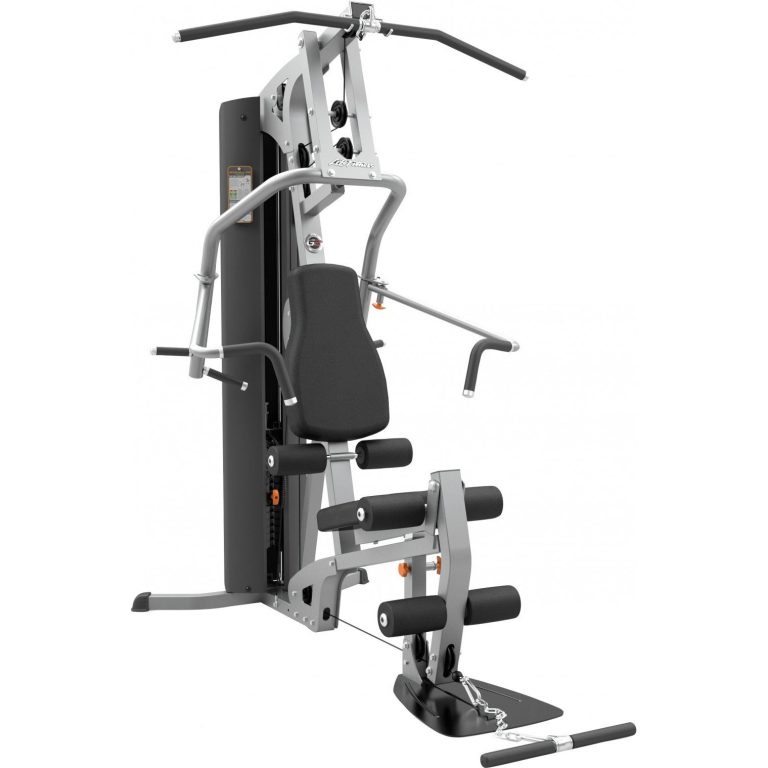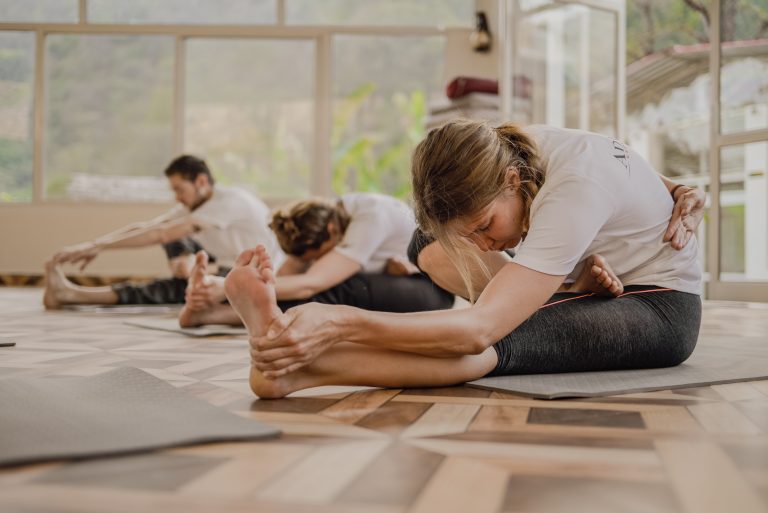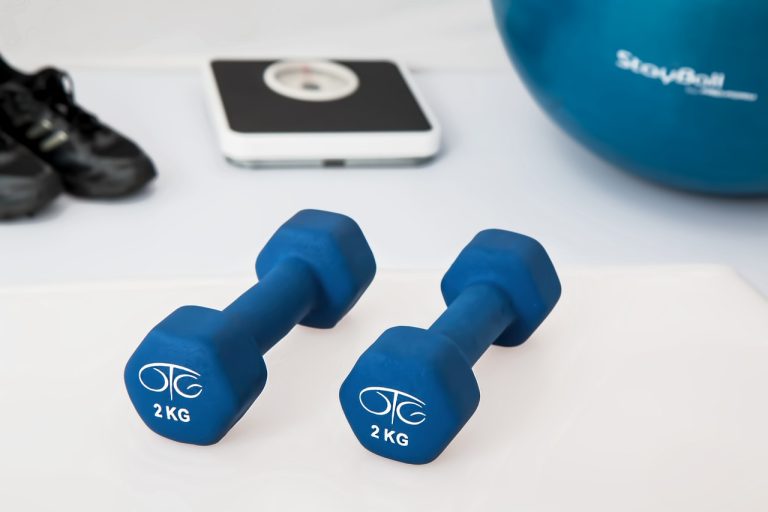As the winter months settle in, it can be challenging to stick to your fitness routine, especially in the UK where cold temperatures and gloomy weather can deter even the most motivated individuals. However, maintaining a regular workout regimen during this time is crucial for both physical and mental well-being. In this article, we will explore some practical tips and strategies to help you stay motivated and keep moving throughout the UK winters. Whether you prefer indoor activities or braving the elements, there are plenty of options to ensure that your fitness goals don’t slip away when the weather turns chilly.

Table of Contents
ToggleBenefits of Maintaining a Fitness Routine During UK Winters
Winter in the UK can be challenging when it comes to staying active and maintaining a fitness routine. The cold weather and shorter days may tempt you to curl up indoors and hibernate until spring. However, there are many benefits to keeping up with your exercise regimen during this time of year. From boosting your mood and mental health to improving your immune system and managing weight, maintaining a fitness routine during UK winters is crucial for overall well-being.
Boosts Mood and Mental Health
One of the most significant benefits of maintaining a fitness routine during UK winters is the positive impact it can have on your mood and mental health. Exercise releases endorphins, which are often referred to as “feel-good” hormones. These endorphins can significantly improve your overall mood and reduce feelings of stress or anxiety that may be heightened during the colder months.
Regular physical activity has been proven to alleviate symptoms of depression and anxiety. Engaging in exercise stimulates the production of neurotransmitters like serotonin, dopamine, and norepinephrine, which are essential for maintaining emotional balance. By sticking to your fitness routine, you can enhance your mental well-being and effectively combat the winter blues.
Improves Immune System
Winter is notorious for its colds and flu viruses, but regular exercise can help boost your immune system and reduce your risk of falling ill. Engaging in moderate-intensity aerobic exercise, such as brisk walking or cycling, for at least 150 minutes per week can strengthen your immune defenses.
Exercise increases blood flow and promotes the circulation of immune cells, allowing them to detect and fight off infections more effectively. It also reduces the release of stress hormones, which can suppress the immune system. By maintaining a fitness routine during UK winters, you can ensure that your body is better equipped to ward off illness and remain healthy.
Increases Energy Levels
The dark and gloomy winter days can often leave you feeling sluggish and low on energy. However, exercise can be a powerful tool in boosting your energy levels and combating fatigue. When you engage in physical activity, your heart pumps more blood, delivering oxygen and nutrients to your muscles and organs. This increased blood flow leads to greater overall energy and vitality.
Regular exercise also improves the efficiency of your cardiovascular system, making everyday tasks feel less exhausting. By incorporating exercise into your daily routine, you can increase your energy levels, feel more alert, and tackle the winter months with vigor.
Helps Manage Weight
Winter is often associated with indulgent comfort foods and festive feasts, making weight management more challenging. However, maintaining a fitness routine during UK winters can help you keep those unwanted pounds at bay.
Physical activity not only burns calories but also boosts your metabolism, allowing your body to burn more calories even at rest. By staying active, you can offset any extra calories consumed during winter celebrations and maintain a healthy weight.
Regular exercise also helps to preserve muscle mass, which is vital for maintaining a healthy metabolism. By combining cardiovascular workouts with strength training exercises, you can build and maintain lean muscle, ensuring that your body continues to burn calories efficiently.
Improves Sleep Quality
The cold and dark winter months can disrupt your sleep patterns and leave you feeling tired and groggy. However, maintaining a fitness routine can significantly improve the quality of your sleep.
Exercise has been proven to enhance the duration and quality of sleep by reducing the time it takes to fall asleep and increasing the amount of deep sleep experienced. Engaging in physical activity earlier in the day can help regulate your body’s natural sleep-wake cycle, making it easier to fall asleep at night and wake up refreshed in the morning.
Regular exercise also reduces stress and anxiety, which are common contributors to sleep disruptions. By incorporating physical activity into your routine, you can enjoy more restful nights and wake up feeling rejuvenated.
1. Setting Realistic Goals
When it comes to maintaining a fitness routine during UK winters, setting realistic goals is essential. By assessing your current fitness level, identifying achievable targets, breaking goals into smaller milestones, and tracking your progress, you can stay motivated and maintain momentum throughout the season.
Assessing Current Fitness Level
Before setting goals, it’s crucial to assess your current fitness level. Take note of your strengths, weaknesses, and any specific areas you want to improve. This will give you a starting point to work from, allowing you to set realistic and attainable goals.
Identifying Achievable Targets
Once you have assessed your current fitness level, it’s time to identify achievable targets. Consider what you want to accomplish during the winter season and break it down into specific, measurable goals. For example, if you aim to improve your cardiovascular endurance, you could set a goal to run a certain distance or complete a specific workout within a set timeframe.
Breaking Goals into Smaller Milestones
To keep yourself motivated and on track, it’s helpful to break your goals into smaller milestones. These milestones act as stepping stones towards your larger goals and allow for a sense of accomplishment along the way. Celebrating these mini-achievements can help boost your motivation and keep you focused on your overall fitness journey.
Tracking Progress
To maintain accountability and monitor your progress, it’s essential to track your workouts and milestones. This can be done through a fitness journal or by using various mobile apps and wearable fitness trackers. By tracking your workouts, you can identify patterns, make necessary adjustments, and celebrate your successes as you work towards your ultimate fitness goals.
2. Planning Indoor Workouts
During the chilly winter months, planning indoor workouts can provide a warm and comfortable alternative to braving the elements. By creating a dedicated workout space, exploring different workout options, utilizing technology and fitness apps, and scheduling your workouts, you can stay active and motivated even when staying indoors.
Creating a Dedicated Workout Space
Having a designated area for your workouts can make a significant difference in your motivation and focus. Create a dedicated workout space at home, whether it’s a spare room or a corner in your living room. Clear the area, lay down an exercise mat, and gather any necessary equipment. Having a dedicated space will make it easier to transition into your workouts and eliminate any obstacles or distractions.
Exploring Different Workout Options
When planning your indoor workouts, consider exploring different workout options to keep things interesting and challenging. Incorporate a variety of exercises such as cardio, strength training, and flexibility work to target different muscle groups and improve overall fitness. This could include activities like bodyweight exercises, yoga or Pilates, dance workouts, or high-intensity interval training (HIIT).
Utilizing Technology and Fitness Apps
Take advantage of the technology and fitness apps available to enhance your indoor workouts. There are numerous fitness apps and online workout platforms that offer a wide range of exercises and training programs to suit your preferences and fitness goals. These resources provide guidance, structure, and motivation, making it easier to stay on track with your fitness routine.
Scheduling Workouts
To ensure that your indoor workouts become a consistent part of your routine, it’s important to schedule them in advance. Treat your workouts as non-negotiable appointments with yourself and block off specific times in your calendar. By treating your workouts like any other important commitment, you prioritize your fitness and make it a regular part of your day.
3. Embracing Outdoor Activities
While the winter weather in the UK can be challenging, embracing outdoor activities can provide a breath of fresh air and an invigorating change of scenery. By choosing appropriate clothing, opting for weather-friendly exercises, and considering safety and visibility, you can enjoy the benefits of exercising outside even during the colder months.
Choosing Appropriate Clothing
When venturing outdoors for a workout, it’s crucial to choose appropriate clothing that keeps you warm, dry, and comfortable. Layering is key in cold weather, as it allows you to adjust your clothing to your body temperature. Start with a moisture-wicking base layer to keep sweat away from your skin, add a insulating mid-layer for warmth, and top it off with a windproof and waterproof outer layer to protect you from the elements.
Opting for Weather-Friendly Exercises
Certain exercises are more suitable for outdoor workouts in the winter months. Activities like walking, jogging, hiking, and cycling can be easily adapted to colder weather conditions. These exercises allow you to maintain a steady pace while still enjoying the crisp winter air. Additionally, winter sports such as skiing, snowboarding, and ice-skating provide a fun and exhilarating way to stay active outdoors during the colder months.
Considerations for Safety and Visibility
When exercising outdoors in the winter, safety should always be a top priority. Ensure that you are visible to motorists and other pedestrians by wearing reflective gear and using lights if necessary. Exercise during daylight hours whenever possible and stick to well-lit areas. It’s also important to be mindful of icy or slippery surfaces and adjust your pace and footing accordingly to avoid accidents or injuries.
4. Joining a Fitness Class or Club
Joining a fitness class or club can be a fantastic way to stay motivated and engaged with your fitness routine during the winter. By finding local fitness classes or clubs, exploring different types of activities, enjoying the social benefits of group workouts, and sticking to a regular schedule, you can enhance your winter fitness journey.
Finding Local Fitness Classes or Clubs
Start by researching and finding local fitness classes or clubs that align with your interests and fitness goals. Whether it’s group fitness classes, CrossFit, martial arts, or team sports, there are numerous options available to cater to different preferences and fitness levels. Look for classes or clubs that offer winter-specific activities or programs to keep you engaged and motivated throughout the season.
Exploring Different Types of Activities
When joining a fitness class or club, take the opportunity to explore different types of activities that you may not have tried before. Trying new exercises or sports can be exciting and help break the monotony of your regular routine. It also challenges your body in different ways, allowing you to improve your overall fitness and discover new passions.
Social Benefits of Group Workouts
Group workouts provide a sense of camaraderie, motivation, and accountability. Exercising with others can make the experience more enjoyable and help you push yourself harder. Connecting with like-minded individuals who share similar fitness goals can be empowering and create a supportive community, reducing feelings of isolation that can sometimes occur during the winter season.
Sticking to a Regular Schedule
When you join a fitness class or club, you commit to a regular schedule, which can significantly improve your adherence to a fitness routine. Having specific class times or team practices helps you structure your day and ensures that you make time for exercise. Regular classes also provide a sense of routine, making it easier to prioritize your fitness and stay on track with your goals.
5. Finding a Workout Buddy
Finding a workout buddy can be a game-changer when it comes to maintaining a fitness routine during UK winters. By motivating each other, providing accountability and support, and sharing similar fitness goals, a workout buddy can help make your workouts more enjoyable and ensure that you stay consistent throughout the season.
Motivating Each Other
Having a workout buddy means having someone to push you and motivate you when you need it most. When the winter chill sets in, it’s easy to succumb to the temptation of staying indoors. However, a workout buddy can offer encouragement and support, helping you stay committed to your fitness goals. Having someone to share the journey with can make the experience more enjoyable and ultimately more successful.
Accountability and Support
A workout buddy provides a level of accountability that can be incredibly beneficial when it comes to maintaining a fitness routine. Knowing that someone is relying on you to show up for a workout can serve as a powerful motivator. Additionally, a workout buddy can provide support during challenging workouts or moments of self-doubt, helping you stay focused and push through any obstacles.
Sharing Similar Fitness Goals
When choosing a workout buddy, find someone who shares similar fitness goals or is working towards a similar outcome. This shared vision creates a sense of camaraderie and allows you to support each other’s progress. Whether you both want to improve cardiovascular endurance, lose weight, or build strength, having a workout buddy who understands and relates to your goals can be incredibly inspiring.
6. Incorporating HIIT and Circuit Training
HIIT (high-intensity interval training) and circuit training are highly effective workout techniques that can help you maximize your fitness gains in a shorter amount of time. By understanding the benefits of HIIT, designing a HIIT workout routine, and integrating circuit training exercises, you can make the most out of your winter workouts.
Benefits of High-Intensity Interval Training (HIIT)
HIIT is a workout style that involves short bursts of high-intensity exercises alternated with periods of rest or low-intensity activity. This type of training has been shown to provide numerous benefits, including increased calorie burn, improved cardiovascular fitness, and enhanced metabolism.
HIIT workouts are time-efficient, making them ideal for busy schedules. They can be completed in as little as 15-30 minutes, allowing you to squeeze in a quick and effective workout even on the busiest winter days. By incorporating HIIT into your fitness routine, you can burn more calories in less time and continue to progress towards your goals.
Designing a HIIT Workout Routine
To design a HIIT workout routine, start by selecting a variety of exercises that target different muscle groups. Choose exercises that can be performed with high intensity for a short duration, such as burpees, squat jumps, mountain climbers, or kettlebell swings. Alternate between these exercises and periods of low-intensity or rest, such as jogging in place or walking.
Begin with a brief warm-up to prepare your body for the intense exercises. Then, perform each exercise at maximum effort for a set amount of time, followed by a short recovery period. Repeat this cycle for several rounds, gradually increasing the intensity and duration of the exercise intervals as you build stamina and fitness level.
Integrating Circuit Training Exercises
Circuit training involves performing a series of exercises back-to-back with little to no rest in between. This style of workout combines cardiovascular exercise and strength training, providing a full-body workout in a short amount of time.
To incorporate circuit training into your routine, select a variety of exercises that target different muscle groups, such as squats, push-ups, planks, lunges, and crunches. Perform each exercise for a specified amount of time or a certain number of repetitions before moving on to the next exercise. Complete the circuit two to three times, allowing a brief rest between each round if needed.
By incorporating HIIT and circuit training into your winter workouts, you can amplify your calorie burn, improve cardiovascular fitness, and challenge your muscles in new and exciting ways.
7. Exploring Indoor Sports and Activities
When the winter weather makes it difficult to exercise outdoors, exploring indoor sports and activities can provide an excellent alternative. From indoor swimming to indoor climbing, indoor cycling, yoga, and Pilates, there are plenty of options to keep you active and engaged during the colder months.
Indoor Swimming
Indoor swimming is a fantastic full-body workout that can be enjoyed year-round. Swimming is a low-impact exercise that works multiple muscle groups while providing an excellent cardiovascular workout. Whether you prefer leisurely laps or more vigorous swimming styles, hitting the pool offers a refreshing and invigorating way to stay active during UK winters.
Indoor Climbing
Indoor climbing is a thrilling and challenging activity that provides an excellent workout for both your muscles and mind. Climbing engages major muscle groups, improves flexibility, and enhances coordination and balance. Indoor climbing facilities typically offer various routes suitable for different skill levels, allowing you to progress and continually challenge yourself.
Indoor Cycling
Indoor cycling, also known as spinning, is a popular and effective cardiovascular exercise that can be enjoyed indoors. Whether you opt for a group cycling class or set up your own stationary bike at home, indoor cycling allows you to control the intensity of your workout and tailor it to your fitness level. Cycling is a low-impact exercise that strengthens your leg muscles, improves endurance, and burns calories.
Yoga and Pilates
Practicing yoga or Pilates during the winter months can provide a calming and rejuvenating workout for both the body and mind. These mind-body exercises improve flexibility, strength, and balance while promoting relaxation and stress reduction. Many studios offer indoor classes, or you can follow along with online videos or mobile apps from the comfort of your own home.
Home Workout Videos
If you prefer the convenience of working out at home during the winter, home workout videos can be a lifesaver. There are countless workout videos available online and on various mobile apps that cater to different fitness levels and interests. From cardio workouts to strength training, dance routines, or flexibility exercises, home workout videos offer a wide range of options to keep you engaged and motivated throughout the winter months.
8. Prioritizing Warm-Up and Stretching
During the winter months, it’s essential to prioritize warm-up and stretching exercises before and after your workouts. By understanding the importance of pre-workout warm-up, incorporating dynamic stretching exercises, and implementing cool-down routines, you can reduce the risk of injuries and improve overall performance.
Importance of Pre-Workout Warm-Up
A proper warm-up is crucial to prepare your body for exercise and reduce the risk of injury. In cold weather, your muscles and joints are more prone to stiffness and tightness, making a warm-up even more important. Before every workout, spend at least 5-10 minutes engaging in light cardio exercises such as brisk walking or jumping jacks to increase your heart rate and warm up your muscles.
Dynamic Stretching Exercises
Dynamic stretching involves moving your joints and muscles through their full range of motion. This type of stretching is beneficial for warming up the body and improving flexibility and mobility. Prioritize dynamic stretches that target the specific muscles you will be working during your workout. Examples of dynamic stretches include walking lunges, arm circles, leg swings, or trunk rotations.
Cool-Down Routines
After completing your workout, take the time to cool down properly. This allows your heart rate to gradually return to normal and helps your muscles recover. Spend 5-10 minutes engaging in light aerobic exercises such as walking or gentle cycling. Follow this with static stretching, where you hold stretches for 15-30 seconds to improve flexibility and allow your muscles to relax and recover.
By consistently implementing warm-up and stretching exercises into your fitness routine, you can improve your overall performance, prevent injuries, and enhance your recovery.
10. Overcoming Winter Fitness Challenges
Maintaining a fitness routine during UK winters can present unique challenges. However, by proactively addressing these challenges, you can stay on track with your fitness goals and overcome any obstacles that may arise.
Dealing with Lack of Motivation
Lack of motivation is common during the winter months when the weather is less appealing and the desire to stay indoors is stronger. To combat this, remind yourself of the numerous benefits of maintaining a fitness routine, including improved mood, energy levels, and overall well-being. Set specific goals that excite and inspire you, and mix up your workouts to keep things interesting and engaging.
Navigating Holiday Indulgences
The holiday season often brings with it indulgent foods and treats, making it challenging to maintain a healthy lifestyle. By practicing moderation and mindful eating, you can enjoy your favorite holiday treats without derailing your fitness goals. Balance indulgent meals with nutrient-dense options, and aim for portion control. Prioritize healthy eating, but allow yourself the occasional treat to satisfy cravings and avoid feelings of deprivation.
Managing Time Constraints
Winter can bring busy schedules and increased demands on your time. However, making exercise a priority and scheduling it into your day can help you manage time constraints effectively. Consider waking up earlier to get your workout in before the day gets busy or break your workout into shorter sessions throughout the day. Remember that even a 15-minute workout is better than no workout at all and can still provide numerous health benefits.
Avoiding Excessive Stress
The winter season often brings added stress, whether it’s related to the holidays, work, or personal obligations. Regular exercise is a powerful stress reliever, as it releases endorphins that boost mood and reduce anxiety. Prioritize self-care and incorporate stress management techniques such as meditation, deep breathing exercises, or relaxation techniques into your daily routine. By taking care of yourself both physically and mentally, you can navigate the winter season with greater ease.
Conclusion:
Maintaining a fitness routine during UK winters is crucial for overall well-being. By understanding the benefits of exercise during this time and implementing strategies such as setting realistic goals, planning indoor workouts, embracing outdoor activities, joining a fitness class or club, finding a workout buddy, incorporating HIIT and circuit training, exploring indoor sports and activities, prioritizing warm-up and stretching, and overcoming winter fitness challenges, you can stay active, healthy, and energized throughout the season. Embrace the colder months as an opportunity to prioritize your fitness and enjoy all the benefits that come with it. Stay motivated, stay consistent, and reap the rewards of a winter well-spent.








